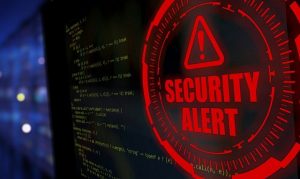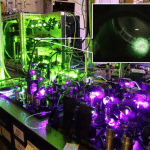Quantum News Briefs December 22: URochester awarded $1.6M from DARPA for quantum-inspired solver systems that solve realistic problems for military; Germany’s QUASIM project investigating quantum computers for metal processing; NTT Scientists report first practical application of Cyber-CIM using quantum-inspired algorithm + MORE

Quantum News Briefs December 22 URochester awarded $1.6M from DARPA for quantum-inspired solver systems that solve realistic problems for military; Germany’s QUASIM project investigating quantum computers for metal processing; NTT Scientists report first practical application of Cyber-CIM using quantum-inspired algorithm + MORE
*****
URochester awarded $1.6M from DARPA for quantum-inspired solver systems that solve realistic problems for military missions
 Officials of the U.S. Defense Advanced Research Projects Agency (DARPA) in Arlington, Va., announced a $1.6 million contract to University of Rochester on Friday for the Quantum-Inspired Classical Computing (QuICC) program.
Officials of the U.S. Defense Advanced Research Projects Agency (DARPA) in Arlington, Va., announced a $1.6 million contract to University of Rochester on Friday for the Quantum-Inspired Classical Computing (QuICC) program.
University of Rochester experts will develop quantum-inspired solver systems that solve realistic problems for military missions. Quantum-inspired solvers are hybrid: they are classical mixed-signal systems that consist of analog hardware and digital logic.
The objective is to deliver system prototype that can improve computational efficiency by at least 50 times for intermediate problem sizes and to show the feasibility of improving efficiency by at least 500 times for mission-scale problems.
The QuICC program will focus on classical hybrid mixed-signal systems; all-digital solvers or quantum computing are not part of the program.
Many U.S. Department of Defense (DOD) missions are limited by available computing resources. Quantum computing may be a potential solution.
*****
Germany’s QUASIM project investigating quantum computers for metal processing
 The QUASIM project, in which Dr. Tobias Stollenwerk from Forschungszentrum Jülich is working together with the German high-tech company Trumpf, is investigating the potential of quantum computers for metal processing. Quantum News Briefs summarizes a recent discussion of the project.
The QUASIM project, in which Dr. Tobias Stollenwerk from Forschungszentrum Jülich is working together with the German high-tech company Trumpf, is investigating the potential of quantum computers for metal processing. Quantum News Briefs summarizes a recent discussion of the project.
Dr. Tobias Stollenwerk explained, “We are concentrating on concrete use cases. One test problem we are investigating with the company Trumpf is the removal of parts during laser cutting. These removal processes often do not run optimally, although these processes are already being optimized today with the help of computer simulations. This is due to the fact that the thermal expansion of the sheets – the laser is very hot – can only be inaccurately taken into account in the previous models. The parts sometimes stick to the sheet after cutting. The machines then have to be stopped to loosen them, which leads to unwanted downtime. Optimizing the cutting patterns with quantum computing and machine learning could help to increase the efficiency and also the quality of the cuts.”
At the moment, they are still simulating the quantum computers on classical computers. This has the advantage the team can concentrate entirely on the development of the quantum algorithms and have to pay less attention to the peculiarities of current quantum systems, which are typically all still somewhat error-prone.
QUASIM is working together with the German Research Centre for Artificial Intelligence (DFKI), which is coordinating the project, as well as the Fraunhofer Institute for Production Technology (IPT), Trumpf and the software company ModuleWorks in Aachen. Ford and MTU are also involved as associated partners. Stollenwerk’s task is to coordinate the work on the part of Forschungszentrum Jülich. His colleagues Dr. Alessandro Ciani and Sven Danz are carrying out the actual research work and investigate quantum algorithms that could be suitable for manufacturing.
*****
NTT Scientists report first practical application of Cyber-CIM using quantum-inspired algorithm
 NTT Research, Inc. announced that scientists from Tokyo+Institute+of+Technology (Tokyo Tech) and NTT Research have successfully developed compressed sensing as the first application of the cyber coherent Ising machine (cyber-CIM), a quantum-inspired algorithm that can be implemented on a modern digital platform today or hybrid quantum-classical machine in the future. Compressed sensing is a signal processing technique used in medical imaging, astronomy and elsewhere that requires extremely high levels of processing on existing computers to discard massive amounts of data with no useful information.
NTT Research, Inc. announced that scientists from Tokyo+Institute+of+Technology (Tokyo Tech) and NTT Research have successfully developed compressed sensing as the first application of the cyber coherent Ising machine (cyber-CIM), a quantum-inspired algorithm that can be implemented on a modern digital platform today or hybrid quantum-classical machine in the future. Compressed sensing is a signal processing technique used in medical imaging, astronomy and elsewhere that requires extremely high levels of processing on existing computers to discard massive amounts of data with no useful information.
This joint research between Tokyo Tech and NTT Research grew out of an agreement signed in 2020 that called for collaboration between the NTT Research Physics & Informatics (PHI) Lab and the laboratory of Dr. Toru Aonishi in the Tokyo Tech School of Computing.
The quantum-classical hybrid system proposed by the authors performs CIM and classical digital processing (CDP) in alternating steps. To evaluate the performance of the cyber-CIM algorithm in solving L0-RBCS, they introduced a truncated Wigner stochastic differential equation (W-SDE) as a model for a system of “n” number of OPOs. The W-SDE falls within the non-theoretical, phase-space method of quantum mechanics, which was invented to circumvent the impossibility (due to limited resources of modern digital computers) of direct numerical simulation in an open quantum system with dissipation. Click here to read complete announcement.
*****
Is Quantum Cybersecurity the next guy’s problem?
 Denis Mandich is the CTO of Qrypt, a post quantum cryptography company, and founding member of the Quantum Economic Development Consortium authored a recent Forbes article asking “Is Quantum cybersecurity the next guy’s problem?” Quantum News Briefs summarizes below.
Denis Mandich is the CTO of Qrypt, a post quantum cryptography company, and founding member of the Quantum Economic Development Consortium authored a recent Forbes article asking “Is Quantum cybersecurity the next guy’s problem?” Quantum News Briefs summarizes below.
He explains that “Many cybersecurity professionals are resistant to committing resources to strategic threats because they are dealing with front-burner crises, continuously hammered by the rest of the C-suite and their boards.”
Trite but true, cybersecurity is never done and will always fail on some level. While some decisions are clearly reckless, incompetent and even criminal, the majority are murky compromises, often choosing the lesser of multiple bad options.
Quantum computing is a potential weapon like no other because it impacts the core of all cyber defensive technologies. The quantum threat must be addressed by quantum technology that leverages today’s advanced cyber machinery that didn’t exist 50 years ago. The government, through the NIST PQC process, has done its part to provide an upgrade but not a solution.
The quantum threat is existential, not just an impact to the bottom line and insurance paperwork. We have quantum security tools available today, but even those are insufficient against a state-level attack, just like airbags are meaningless against a hellfire missile shot from a predator drone. The good news is, there will be a finite amount of those cyber lethal resources available,
President Biden has given every U.S. federal agency until May 23, 2023, to report their quantum vulnerabilities and submit their remediation plan. This really means every vendor doing business with the government. If a larger encryption-breaking quantum computer is available tomorrow, does your leadership team have one? Click here to read Denis Mandich’s complete Forbes’ article.
*****
Sandra K. Helsel, Ph.D. has been researching and reporting on frontier technologies since 1990. She has her Ph.D. from the University of Arizona.





















